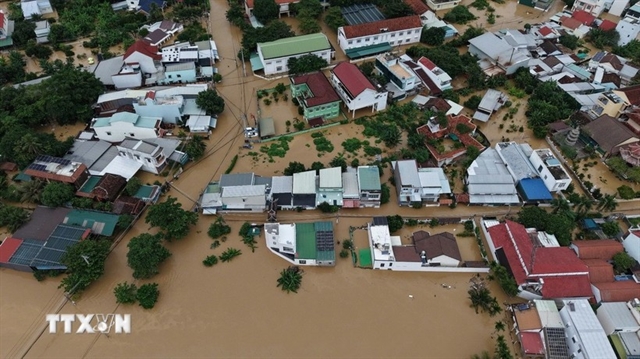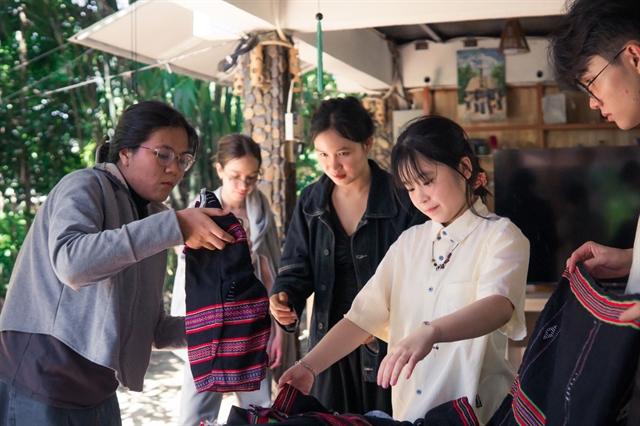 Opinion
Opinion

 |
| Võ Hải Sơn, Deputy Director of the Department of Disease Prevention under the Ministry of Health. — Photo baochinhphu.vn |
Deputy Director of the Department of Disease Prevention under the Ministry of Health, Võ Hải Sơn, sat down with a Government e-Portal reporter to discuss Việt Nam's current dengue fever situation, the cyclical nature of outbreaks and what can be done to prevent future epidemics.
How would you describe the current dengue fever situation in Việt Nam?
As of the end of September 2025, Việt Nam has recorded about 106,000 dengue fever cases, a 20 per cent increase over the same period last year.
Over the past decade, the country has experienced a major nationwide outbreak roughly every three years, and this year once again falls within that cycle.
Large-scale epidemics previously struck in 2019 and 2023, each recording more than 350,000 cases across the country.
At present, infections are concentrated mainly in the southern provinces, where humid and rainy weather provides perfect conditions for dengue-carrying mosquitoes to breed.
The highest numbers have been reported in HCM City, Đồng Nai and throughout the Mekong Delta. In HCM City, cases have surged by more than 80 per cent year-by-year, while in Cà Mau, Cần Thơ and An Giang, some communes have seen infection rates triple.
The central province of Khánh Hòa has also reported a significant rise, showing that the epidemic is no longer confined to its usual southern strongholds.
Deaths have similarly been concentrated in southern areas. Most fatalities occurred among patients who arrived at hospitals too late or had pre-existing health conditions.
Meanwhile, the northern, central and Central Highlands regions have generally recorded fewer cases than last year. However, in Hà Nội and several northern provinces, frequent rains in August and September have caused mosquito populations to surge, leading to a noticeable increase in dengue infections.
Why does dengue fever remain a persistent and serious public health threat in Việt Nam?
Dengue fever has long been a familiar presence across many regions of the world. Today, more than 100 countries continue to report dengue transmission – mostly in tropical and subtropical areas – and Việt Nam remains among the global hotspots.
These are regions where the climate and environment offer ideal breeding conditions for dengue-carrying mosquitoes. Additionally, regional and international trade and travel make it easier for the virus to spread across borders.
From a public health perspective, dengue control is not purely a medical challenge but also a social one. Effective prevention depends on close coordination between health authorities, local communities and the general public.
Has the disease changed in its nature or severity compared to previous years?
The dengue virus still circulates in four distinct serotypes, meaning a person can be infected up to four times, each by a different strain.
Severe dengue can cause internal bleeding and damage to vital organs such as the liver, kidneys and heart, and may lead to plasma leakage and fluid buildup that cause shock and can be fatal if untreated.
The severity of illness depends largely on individual physiology. Hospital data show that around 5 to 10 per cent of dengue patients each year develop serious complications that require close monitoring.
With more than 100,000 infections annually, even that small proportion translates into thousands of severe cases, placing considerable pressure on healthcare facilities.
A single Aedes mosquito can lay up to 200 eggs at a time, which can hatch into adults within seven to ten days under favourable conditions. Worryingly, the eggs can survive in dry environments for six months to a year.
This rapid breeding cycle means that after every period of heavy rain, flooding or storm activity, the risk of a dengue outbreak rises sharply. That's why communities are constantly urged to take immediate preventive action after natural disasters to eliminate mosquitoes, larvae and eggs before they multiply.
What role does 'integrated disease prevention' play in tackling dengue fever?
Dengue prevention cannot be handled by the health sector alone; it requires multi-sectoral cooperation and active participation from the public.
Aedes mosquitoes prefer to live indoors and around houses, and their eggs can survive for long periods in nature. The disease thrives wherever standing water and poor sanitation persist.
That’s why community-based measures are essential. The most effective prevention starts right at home – removing stagnant water, killing larvae and adult mosquitoes and ensuring that containers capable of holding water, such as old tyres or discarded jars, are emptied or covered.
Such efforts must be carried out regularly and continuously, not only during peak outbreak seasons.
Integrated prevention also extends beyond dengue control itself. Because the same mosquitoes can spread Zika, Chikungunya, Japanese encephalitis and even malaria, actions such as mosquito eradication, environmental hygiene and water management can help reduce multiple disease risks simultaneously.
Many people think dengue fever usually goes away on its own. Is that correct?
Most dengue cases are indeed mild or moderate and can recover naturally with proper care at home. But the disease can still develop into severe or life-threatening forms in anyone, regardless of age or general health.
Because each person’s body responds differently to infection, people should never take dengue lightly. Sudden high fever, headache and fatigue should never be ignored.
Once these symptoms appear, patients should seek medical care immediately rather than self-treat at home, even if they feel otherwise healthy. The most dangerous period comes after the third day of illness, when complications can arise.
Those at greatest risk of severe illness include children, the elderly and people with chronic diseases.
As mosquitoes are the vectors of transmission, everyone must actively join the community effort to eliminate mosquitoes and larvae.
Even if a home appears mosquito-free, there is no guarantee its residents won’t be bitten by dengue-carrying mosquitoes elsewhere – something that can happen at any time.
If communities work together – destroying larvae, keeping their surroundings clean and maintaining a healthy environment – Việt Nam can curb dengue outbreaks and better protect public health.
— VNS




